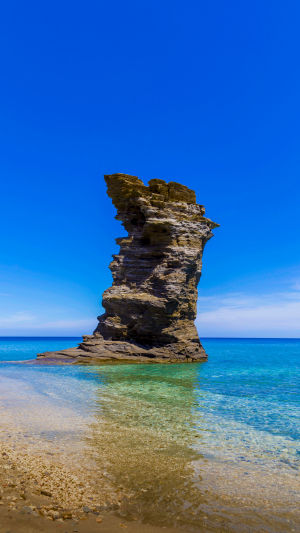In the vast expanse of the ocean, there are countless wonders of geography, but perhaps none are as captivating as islands and reefs.
While these two may appear similar at first glance, they each possess unique charms and characteristics. Let's delve into the depths and uncover the subtle differences between them.
<b>Firstly, let's begin with definitions.</b>
An island is typically defined as a piece of land surrounded by water, capable of sustaining human habitation and possessing an independent ecosystem. Islands come in all sizes, from tiny isolated islets to vast landmasses akin to continents.
On the other hand, a reef refers to a rocky structure rising from the seabed, usually located below the surface of shallow waters, composed of coral, shells, or mineral deposits. The formation of reefs is often linked to the activities of marine organisms and forms an integral part of an ecosystem.
<b>Next, let's explore their formation processes.</b>
Islands often form as a result of geological processes such as volcanic eruptions, tectonic plate movements, or uplift of the seabed. Volcanic islands, like the Hawaiian Islands, are formed by volcanic eruptions, while islands on land may result from changes in sea levels due to tectonic movements or erosion by rivers.
In contrast, the formation of reefs is a slower and more continuous process, typically arising from the growth and accumulation of coral and other marine organisms. They gradually establish themselves in seawater, relying on the accumulation of microorganisms and plankton, eventually forming breathtaking reef landscapes.
Apart from the formation process, islands and reefs also exhibit distinct differences in their ecosystems.
Islands typically boast greater biodiversity, including terrestrial animals, plants, and birds.
They provide a diverse range of habitats and food sources for various organisms. In contrast, reefs are more focused on marine ecosystems, serving as vital components of coral reef ecosystems, and offering unique habitats and shelter for marine life.
Furthermore, islands and reefs play different roles in human activities and culture.
Islands are often used for habitation, tourism, or agriculture, bearing rich cultural heritage and a history of human activities.
In comparison, reefs, while also attracting human attention, are more commonly utilized as diving sites, scientific research bases, or tourist attractions. While not as conducive to habitation as islands, reefs draw countless visitors and scientists to explore their unique ecological landscapes.
In conclusion, although islands and reefs may bear some superficial similarities, they exhibit distinct differences. From formation processes to ecosystems, and human activities to cultural significance, islands and reefs each possess unique charms and values. Together, they form a diverse tapestry of geographical landscapes in the ocean, offering endless opportunities for exploration and wonder.





